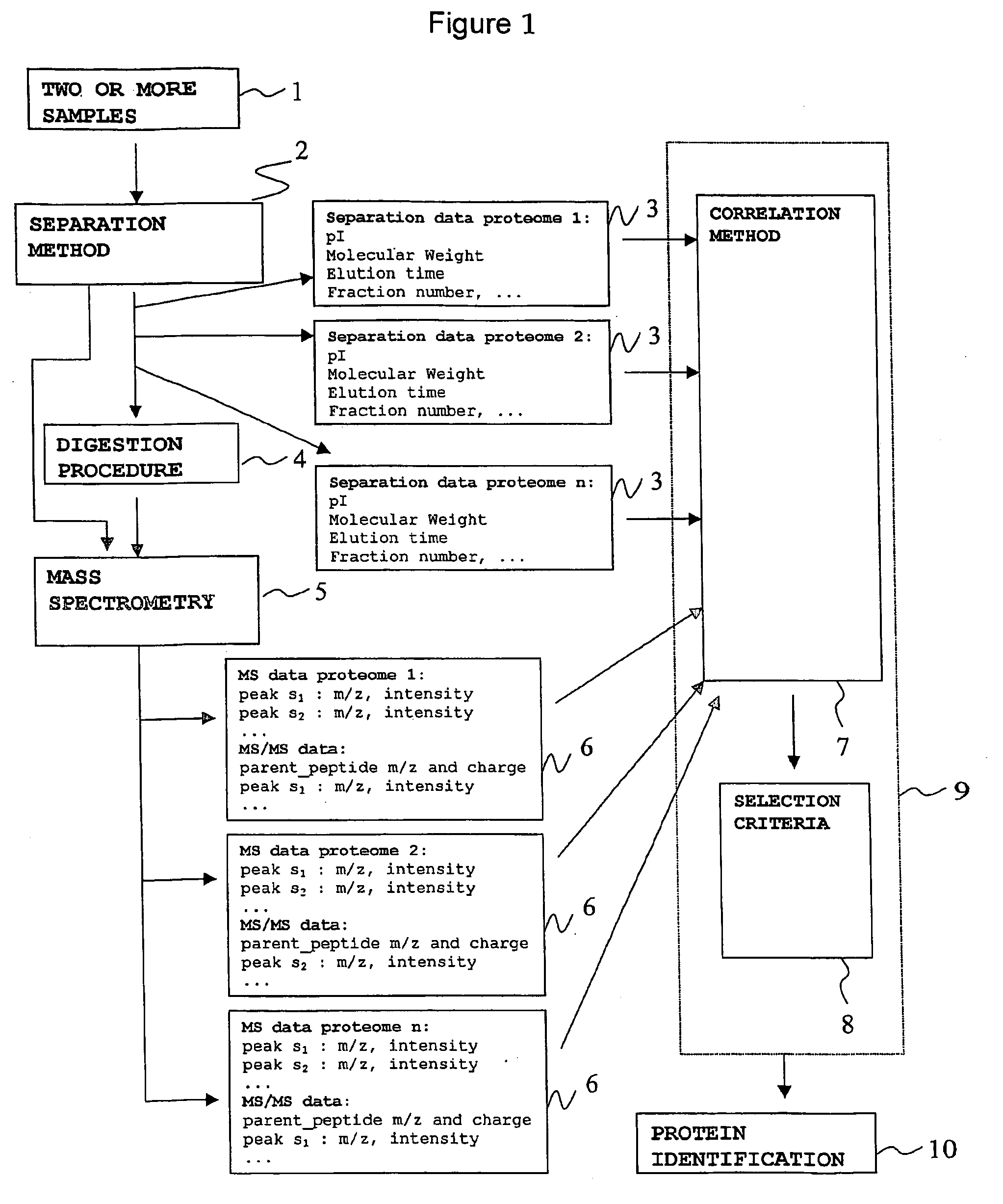Method for comparing proteomes
a proteome and proteome technology, applied in the field of proteomics, can solve the problems of waste of significant resources and computing power, which could be better used for other tasks, and achieve the effect of reducing the number of errors and avoiding the loss of proteomes
- Summary
- Abstract
- Description
- Claims
- Application Information
AI Technical Summary
Benefits of technology
Problems solved by technology
Method used
Image
Examples
Embodiment Construction
[0076] In order to compare two or more samples containing proteins (1), the present invention comprises the following steps: [0077] a. Providing two or more samples containing proteins (1). [0078] b. Separating each sample by a protein separation method (2) and saving the resulting separation data (3). [0079] c. Cleaving the separated protein content of each sample by enzymatic digestion (4). [0080] d. Analysing the resulting peptide mixture of each sample by mass spectrometry (5) and saving the resulting mass spectrometry data (6). [0081] e. Correlating the experimental data resulting from step (b) and step (d) for each sample with the corresponding experimental data for the other sample or samples, by a correlation method (7). [0082] f. Selecting a subset of the experimental data correlated in step (e) according to one or more of the following selection criteria (8): [0083] experimental data which is not correlated with any other experimental data in the other sample or samples. [...
PUM
| Property | Measurement | Unit |
|---|---|---|
| mass spectrometry | aaaaa | aaaaa |
| pressure | aaaaa | aaaaa |
| electrophoresis | aaaaa | aaaaa |
Abstract
Description
Claims
Application Information
 Login to View More
Login to View More - R&D
- Intellectual Property
- Life Sciences
- Materials
- Tech Scout
- Unparalleled Data Quality
- Higher Quality Content
- 60% Fewer Hallucinations
Browse by: Latest US Patents, China's latest patents, Technical Efficacy Thesaurus, Application Domain, Technology Topic, Popular Technical Reports.
© 2025 PatSnap. All rights reserved.Legal|Privacy policy|Modern Slavery Act Transparency Statement|Sitemap|About US| Contact US: help@patsnap.com

